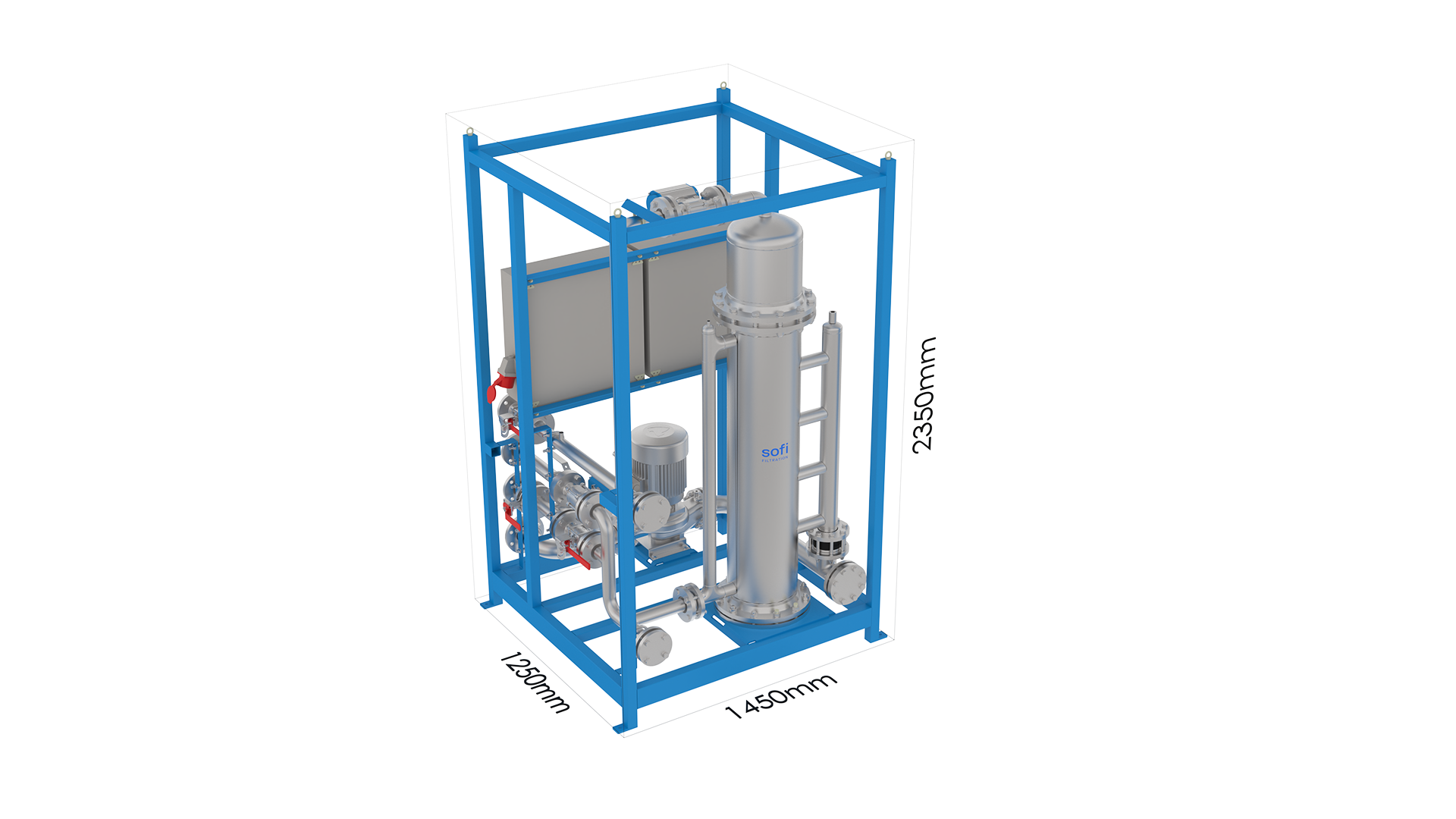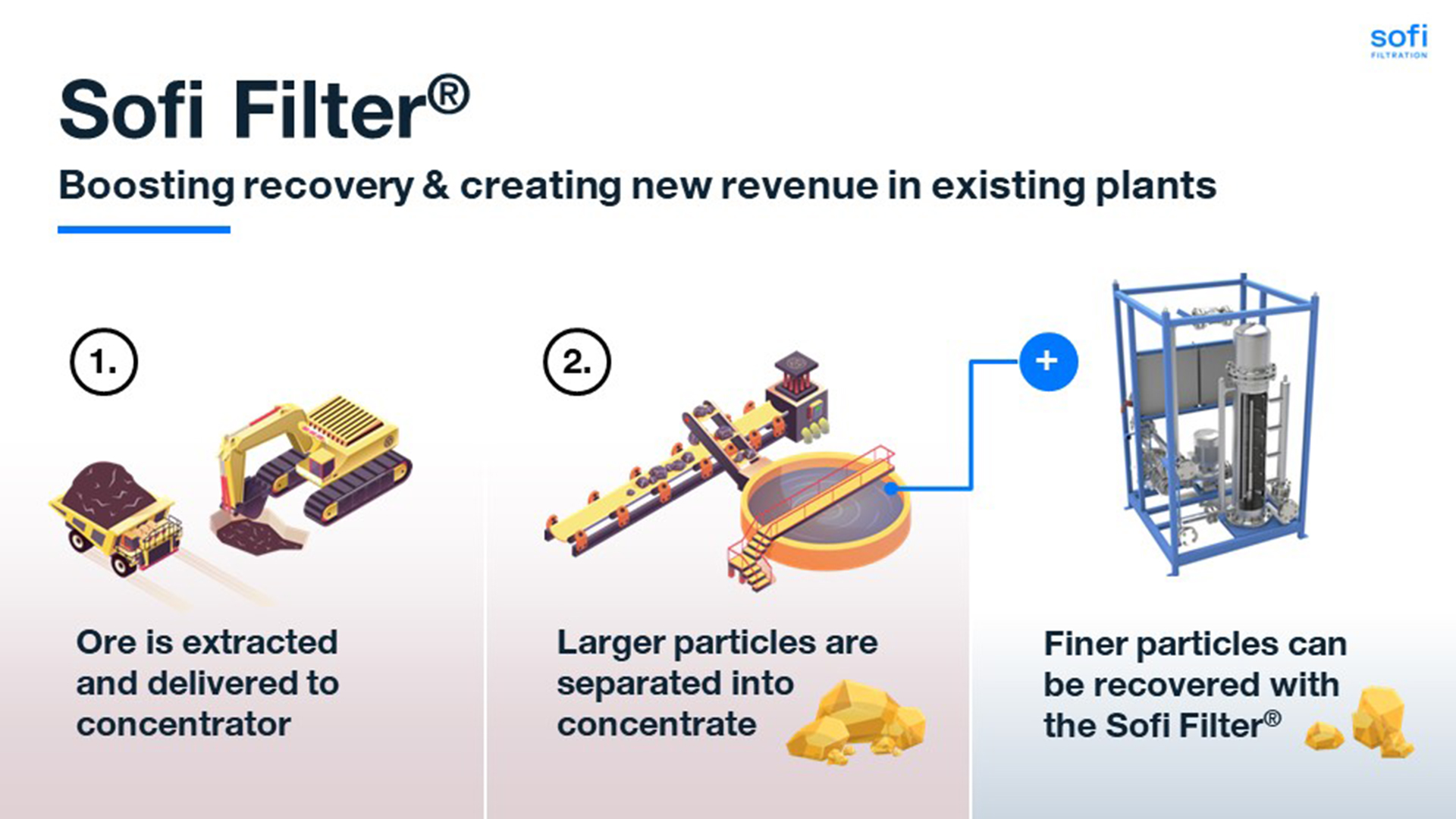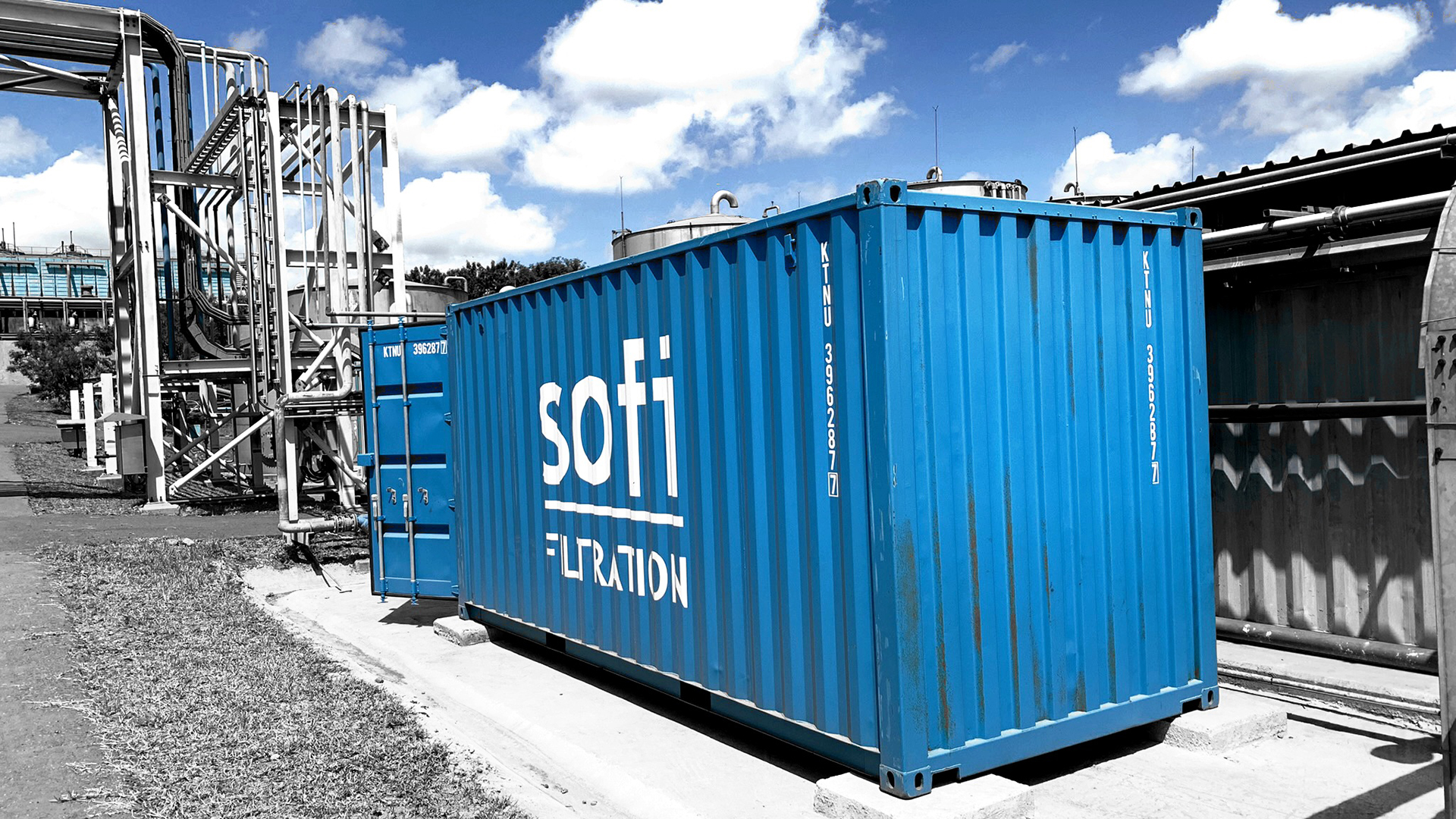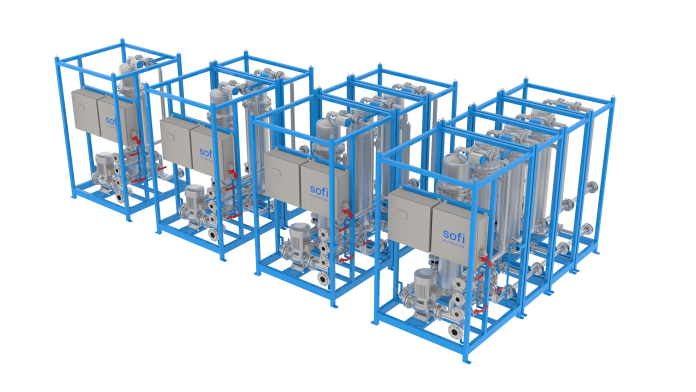Employing its extensive experience and expertise in fine particle separation, Sofi Filtration aims at boosting recovery and water efficiency at existing concentrators.
With the mining industry looking to ramp up production in response to the increased demand for metals driven by the energy transition and geopolitical tensions, the development of new mines must be accompanied by further efficiency improvements in recovery at existing concentrators.
Up to 40% of valuables are lost in mining and mineral processing, and a mere 5% improvement in existing concentrators would have a major impact: 1.1 million tonnes of copper or 165,000 tonnes of nickel per annum. Whereas the development of new mines is time-consuming and carries major risks over fluctuating metal prices, efficiency investments are possible today.
Navigating challenges in the field
Improving recovery at existing concentrators is not without its difficulties. Valuables are often lost because of fine particles escaping conventional processing.
Fine particle separation in mineral processing is technically and techno-economically challenging: Volumetric flow rates can be high, i.e., hundreds and thousands of cubic meters per hour, particle concentrations are low, and particle size is fine, i.e., in the range of some tens of microns.
All of this is very familiar to Sofi Filtration, which designs and supplies the mining industry with advanced fine filtration technology. CEO, Riina Salmimies explained: “Fine particles in low concentrations are a painful separation to address. The bulk material is already handled by major technology companies. We specialise only in fine particle filtration, understanding that the industry is inevitably headed in that direction, whether it’s boosting recovery or controlling for contaminants in process or discharge water.”

New technology going beyond what has previously been possible is necessary to further improve efficiency in recovery. Particle filtration technology addressing solids in liquids is mature and has seen very little improvement in terms of new technology innovation introduced to the market in the past decades.
Conventional established technologies include disposable filters, such as bags and cartridges, which are costly and inconvenient for the operator; different media filters, which are expensive and have a large footprint; and microfiltration membranes, which are sensitive to different types of contaminants.
Most of these technologies are not designed to recover fine particles but to remove them as unwanted contaminants: Protecting pumps, preventing scaling, and cleaning up process waters.
The Sofi Filter®: Advancing particle filtration technology
The patented Sofi Filter® uses ultrasound and air-assisted backflushing to remove particles from the surface of the medium. This way, the capacity of the medium is restored after particles block the pores of the filter medium. With the system made of stainless steel, including the filter medium, there are very few wearables.
Sofi Filtration provides customers with turnkey systems, including instrumentation and automation. The filtration systems are designed for long life and minimum maintenance, contributing to low opex and increased process and occupational safety compared to conventional clarifying filters.
When asked about scalability, sales representative Toni Nikku said: “Our technology is modular. We can cater from some cubic meters per hour up to thousands of cubic meters per hour. Modularity allows for easier logistics and installation on-site and makes our technology easier to retrofit. Existing plants often struggle with space. We also offer containerised solutions, which are an ideal solution for mining sites.”
The first filter ever delivered by Sofi Filtration was in 2013 to Anglo American in Sakatti, where the filter is used to treat water from drill core sawing. The challenges of fine particle separation are well known for Sofi Filtration, which has worked on them for the past ten years.
Considering technology development, staff scientist Elsi Strand said: “We go beyond market standards in understanding the pore size of our media, how different solid materials behave for our technology and how to manipulate feed conditions to boost performance.”
Potential applications
When looking at applications at existing concentrators, two stand out for Sofi Filtration:
1. Recovery of fine particles to boost overall recovery of valuables.
2. Removal of fine particles from circulation waters to ensure efficient processing of the ore.
Boosting recovery of valuables by the Sofi Filter® can be done particularly at the concentrate thickener or at the final dewatering of the concentrate. These are point sources of losses, and the water streams generated are well-suited for clarifying filtration. With depleting ore grades, it is necessary to grind finer to liberate the target minerals, which leads to an increase in the fraction of fines.

In addition to improving flotation, it is important to ensure that losses are minimised at the thickener and at final dewatering. Furthermore, with an efficient fine filtration solution, chemical dosing at the thickener could be further reduced, which carries both economic and environmental benefits. In a recent trial, 90.5% of fine valuables were captured using the Sofi Filter®.
Salmimies summarised: “We’ve seen high prices for gold, copper and nickel recently. The higher the metal prices, the more money is being bled out with those recovery losses. The time to invest is now.”
As we need to grind finer to liberate valuables, an inevitable spin-off effect arises: Increased concentration of fines in circulation waters. Fines are detrimental to, for example, froth flotation, which is a common unit operation in mineral processing.
Unwanted fines consume chemicals used to separate the target minerals, resulting in the need to increase dosing, which in turn drives up opex. Furthermore, a number of flotation chemicals come with environmental concerns and maximising efficiency by minimising use follows the key principles of risk management.
The Sofi Filter® can be used to separate those fines before further use of process water. In a recent trial, 88% of fines were removed from tailings dam water using the Sofi Filter®. Direct payback is generated through savings in chemical costs, whereas indirect payback comes from securing the performance of primary processing, such as froth flotation.
Salmimies said: “Treating process water from mineral processing to enable re-use is an ideal application for our technology. The particle matter is well-suited for our self-cleaning methodology, and low concentrations and small particle sizes challenge other clarifying filtration technologies.”
A comprehensive, competitive solution
Laboratory testing and piloting are regular parts of the process at Sofi Filtration. This is not because of the novelty of the filtration technology but primarily for the benefit of the customers.

Anssi Laiho, senior field service engineer, explained: “We are often trying to accomplish something that has not been done before or that no one else can technically perform, and our customers deserve to have that technical risk managed as well as is practically possible. Testing is an easy way for the customer to get to know us and our technology. Testing can mean anything from point sample testing in the laboratory to filtration containers out on site.”
Sofi Filtration aims to contribute to a 10% increase in the recovery of valuables at existing concentrators while bringing down CO2 emissions per tonne of concentrate.
Furthermore, through research collaboration, a 10% decrease in chemical dosing at the concentrate thickener is targeted.
The total cost of ownership of the Sofi Filter® is estimated to be 40% lower than that of competing technologies. This competitive advantage arises from minimal maintenance needs, not having to exchange the filter medium, and low energy consumption of the filtration units.
The ultimate target, of course, is to contribute to securing sufficient raw materials for the energy transition and making sure the industry can drive water efficiency within plants.
Please note, this article will also appear in the 19th edition of our quarterly publication.









